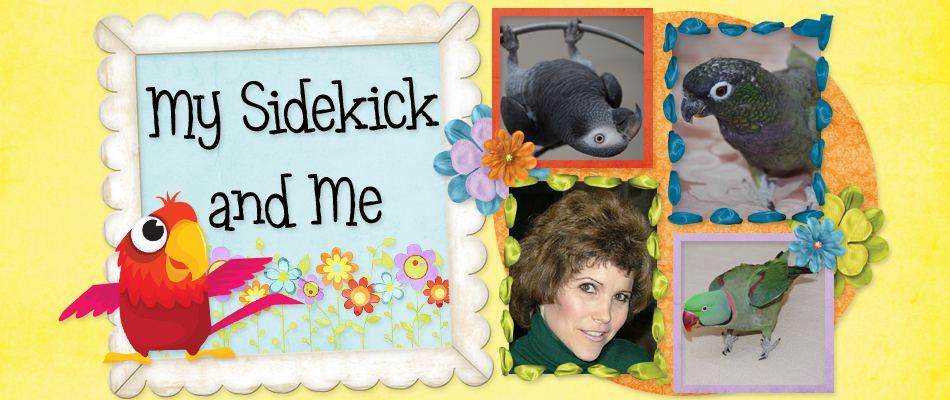Thank you so much to trainer Therese McClain for letting me publish this article she wrote in 2000 about working on object aggression in dogs. You'll see that she does not use any type of force, but rather worked from the perspective of...How can I set my dog up for success?
I have a now 5 year old golden, who I adopted as a almost 2 year old. She had a serious guarding problem which we have overcome.
This is what I did.
When she would be laying on the floor chewing a bone, I would walk up to her, stop, smile and speak cheerfully and then drop a treat and move on. I tried to do this several times a day.
It didn't take too long, before she stopped growling when I came near. She began to actually look forward to me coming near her and even got to the point of letting go of the bone to look up and smile in return..( she is a golden
I then started stooping, speaking cheerfully and placing the treat on the floor, getting up and moving on.
After that, I would stoop, touch her rear (I wasn't stupid), smile, speak cheerfully and place a treat on the floor.
It wasn't long before I could stop, stoop, smile, pet her head, and place the treat on the floor.
I knew I was home free then. I then proceed to touch the bone, place the treat etc.
And finally, take the bone, give her a treat and then give back the bone.
She is a
Now my question would be, how did you proof and escalate that to include someone swooping down and grabbing an item away from the dog? (setting up ability for people to reach down -- including child or acquaintance -- and take item away from dog safely?)
I think the last step I mentioned in my post was...taking the bone, giving a treat and giving back the bone.
After that I did a lot of trading, bone for treat, bone for another bone, bone for a a highly valued toy. etc.. ( always something of the same or better value in the dogs eyes) I always spoke to her first, smiled and petted her head before any trade.
This speaking, smiling and petting actually became a signal (in a way) that I would be trading.
At first, she was very reliable with me, but not trustworthy with others. I gradually added other people she knew and liked. They had to follow the rules of course. They had to trade and they had to speak, smile and pet her head first.
She, of course was highly reinforced for this....lots and lots of praise and sometimes a jackpot of treats instead of just one.
This just took time...that's all. She was better with some people than others at first. For instance, she was wonderful with my 9 year old grandson right off the bat, but gave his father (my son) a warning growl at first. When this happened, I took the bone, gave her a treat and praise, (for giving up the bone to me), gave the bone to my son to return to her and then he petted her.
One thing, I did not move from one step to another until she was comfortable relaxed and happy at that step. My criteria was not just that she was accepting of the step, but that she would look up at me in anticipation and smile. (Oh here comes mom and she's got something good.)
I do not have to trade or treat now (it's been three years), but did so for at least a year. She does not guard her bones now from anyone and anyone can take an object from her.
I never corrected her or used an NRM. I set her up to be successful and broke the whole thing down into very small steps...reinf
What precautions did you take when introducing additional people (did you talk to them in advance, give them direction on approaching dog, etc.)? How did you manage the environment so that dog was not faced with inappropriate grabs of objects too soon?
Yes, yes, yes. I decided who I would introduce and yes I did talk to them in advance and gave them specific instructions. I would even set it up by doing a trade first and then having the other person do a trade.
I did not do this when my home was busy and full of people etc. I did it when the house was calm and everyone was relaxed and in a good mood...dog included..
When my house was busy and full of visiting relatives, I simply warned everyone to "Don't bother Kayla when she's chewing a bone, she might bite!" and believe me the moms and dads and I made sure the kids didn't bother her.
It probably would have been a good idea to put bones up when I had company but I never did. We have a whole basketful of them, and she would immediately run and get a bone when company came.... and just lay there smiling and chewing..
I also want to add that I (and eventually others) would sometimes just pet her when she had a bone and then move on. We didn't always trade..sometimes just a kind word and a pet. I didn't want her to become tense or anxious every time I approached her and she had an object. (bones were the major source of contention...rawhide was not allowed)
And so a lot of times, I would just have people pet her with me right there and then I would give her a treat for being such a good dog.
I should also mention that Kayla is very people friendly and simply loves people and children. She just had this serious guarding problem LOL.
I also took the time to teach her a food induced retrieve. I believe that this helped too. It helped with the concept of giving up an object and getting a treat in return. (of course, the dumb bell did not have the value of her chewing bones)
I used absolutely no correction with Kayla. I helped her get things right and then I reinforced those things.
If someone made a comment about her guarding problem, I simply told them "We were working on it".
I believe the major turn around though was in the beginning steps. The rest just took time.
But it is getting to be a problem, so much so that I sometimes cannot even remove the empty bowl from her crate after she is finished to wash it or wipe down the crate floor.
I helped a friend with a dog that guarded her food bowl.
The first thing I would do is walk over to her bowl while she was eating and dropped a really yummy treat into it (or as near as possible if her head was in the bowl.) Remember to be pleasant and smile and talk sweetly.
We want her to realize that you don't take, that you add and only good things happen when you approach her eating.
When she is backing up for you to add the yummy treat and seems happy at your approach, you can then stoop down and add the yummy treat....or.... better yet... add more of her food. In fact, you can give her only 1/3 and then add the other two thirds a third at a time.
I bet she will love for you to come over to her bowl then.
When all is going well, you can touch the bowl and add the food and eventually pick up the bowl, add the food and put it back down.
As for digging up her buried bones in the yard, I would do a little managing with that for awhile and make sure she is not around. We don't want do undo all the work you will be doing with her bowl.
(Left: Therese McClain with Annie and Kayla, Therese's companions who have since passed on to the rainbow bridge.)
Sunday, February 28, 2010
Dog Training Help - Using Positive Strategies To Overcome Object Guarding
Saturday, February 13, 2010
Westminster Dog Show Begins February 15
Last year, Stump - the Sussex Spaniel, took home the top honors. Who do you think will win this year? For videos and images during the show, check out their website Westminster Kennel Club Dog Show.
Tuesday, February 9, 2010
Tips For Dog Training Success
Below are some tips for setting your dog (and you) up for success by Melissa Alexandar of Clicker Solutions. Don't think of behaviors as good and bad - those words carry too many moral implications that have no place in the dog's existence. Try desirable and undesirable.
Don't think of behaviors as good and bad - those words carry too many moral implications that have no place in the dog's existence. Try desirable and undesirable.
Set your dog up for success! Manage the dog's environment so he can't make mistakes. When training, keep your criteria low enough that the dog can be successful frequently.
Don't be afraid to have a high rate of reinforcement. Your dog won't be spoiled - he'll be eager to work because it's fun!
Divide your dog's food into tiny portions and have him work for it throughout the day. Some dogs, such as herding breeds, actually prefer to work for their food.
Train off-leash whenever possible. Remember, the leash is a tether for safety - it's not a training tool.
Don't have treats in your hand or on your person when you train, if possible. It's okay to delay delivery of the treat for a few seconds while you walk to a bowl.
Keep treats stashed in bowls out of the dog's reach all over the house, and carry a clicker all the time. That way you can reinforce desirable behaviors anytime.
Change the picture a little bit every time you ask for a behavior. Change your position. Change locations. The only thing that should be consistent is the cue.
Ignore undesirable behavior as much as possible. Every time you reinforce a desired behavior, it's like adding money to a bank account. The more money in that account, the stronger the relationship with your dog. Positive punishment - even if effective - removes money from that bank account, and it weakens the relationship.
If you do use a physical correction, look at the effect. Did the behavior not only stop temporarily, but happen less frequently? If not, it wasn't a correction - it was abuse.
(These copyrighted tips were reprinted with permission from Melissa)
Tuesday, February 2, 2010
Articles On A Positive Way To Teach
I stumbled upon this site that offers a lot of good information on positive reinforcement and operant conditioning in dog training or 'teaching' as I like to say.
https://www.msu.edu/~silvar/train.htm












